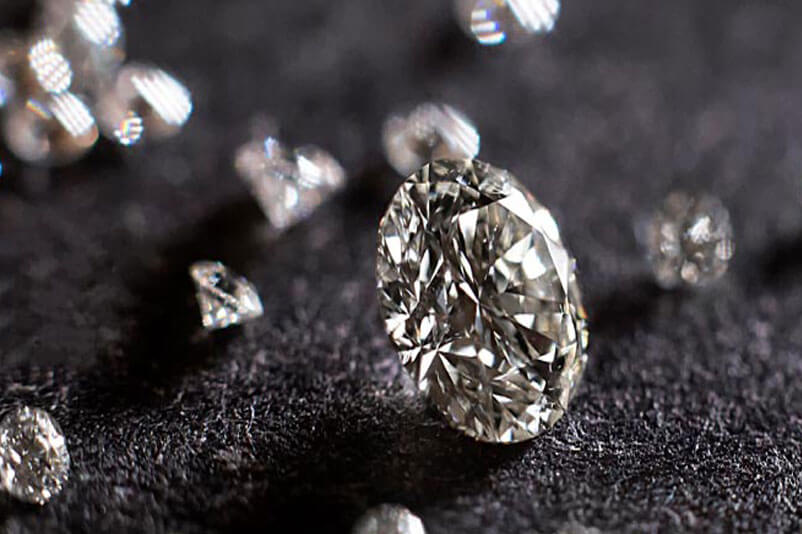Diamonds have long been synonymous with luxury, wealth, and beauty. Traditionally, these precious stones have been mined from deep within the Earth, a process that is both labor-intensive and environmentally taxing. However, with advancements in technology, a new era for diamonds has emerged — the era of man-made diamonds.
Man-made diamonds, also referred to as synthetic or lab-grown diamonds, are diamonds that are produced using technological processes rather than natural geological forces. They have the same physical, chemical, and optical properties as natural diamonds but are created in a controlled environment. This innovation not only opens up a new frontier in the jewelry industry but also promises to address some of the significant ethical and environmental concerns associated with traditional diamond mining.
The Science Behind Man-Made Diamonds
There are two primary methods for creating man made diamonds: High Pressure High Temperature (HPHT) and Chemical Vapor Deposition (CVD).
- High Pressure High Temperature (HPHT): This method replicates the extreme pressure and temperature conditions found deep within the Earth. Carbon is subjected to intense pressure and heat, turning it into a diamond crystal. HPHT was first developed in the 1950s and is still widely used today.
- Chemical Vapor Deposition (CVD): In this method, a carbon-rich gas (usually methane) is heated in a vacuum chamber, causing the carbon atoms to separate and bond together, forming diamond crystals on a substrate. The CVD process is more versatile and allows for greater control over the size, shape, and quality of the diamonds produced.
Both methods result in diamonds that are indistinguishable from natural diamonds with the aid of advanced gemological testing. They share the same hardness, brilliance, and overall appearance, making them an attractive option for consumers looking for both quality and sustainability.
Ethical and Environmental Benefits
One of the primary appeals of man-made diamonds is their ethical and environmental advantages over mined diamonds. Traditional diamond mining has long been associated with a range of issues, including environmental degradation, human rights violations, and “conflict diamonds” that fuel violence and instability in certain regions. Man-made diamonds offer a solution to these concerns:
- Environmental Impact: Diamond mining can result in deforestation, soil erosion, and water contamination. In contrast, lab-grown diamonds require significantly fewer natural resources and cause less environmental damage. The production of man-made diamonds uses energy, but the industry is moving toward more sustainable practices, such as sourcing renewable energy to power production facilities.
- Ethical Considerations: Lab-grown diamonds are free from the ethical dilemmas that surround traditional diamond mining. With synthetic diamonds, there is no risk of supporting conflicts or unethical labor practices. Buyers can be confident that their diamonds are conflict-free and have not contributed to human suffering.
- Transparency: The production of man-made diamonds occurs in controlled environments, which makes it easier to trace the entire journey of the stone from creation to sale. This transparency gives consumers more control over the ethical sourcing of their jewelry.
Cost-Effectiveness
Another major selling point for man-made diamonds is their cost. Lab-grown diamonds can be up to 30-40% less expensive than their natural counterparts of similar size and quality. The lower cost is due to the more efficient production processes, which do not require the expensive and labor-intensive mining process. This price difference makes diamonds more accessible to a wider range of consumers, while still offering a high-quality product.
A Growing Industry
The man-made diamond industry has seen significant growth in recent years. While lab diamonds were initially met with skepticism, their increasing popularity in fine jewelry, engagement rings, and even industrial applications have made them a staple in the market. Major brands, both luxury and independent, have begun to embrace the technology, offering a wide range of lab-grown diamond products. In fact, some estimates suggest that the market for lab-grown diamonds could reach $30 billion by 2030.
Consumers are becoming more educated about the differences between natural and lab-grown diamonds, and many now view synthetic diamonds as a more responsible and sustainable choice. The rise of social media, influencer marketing, and the growing demand for transparency in all industries have played a significant role in this shift.
The Future of Man-Made Diamonds
As technology continues to evolve, so too will the production of lab-grown diamonds. Researchers are constantly working on improving the efficiency, scalability, and sustainability of the process. Innovations such as the ability to create diamonds in a wider variety of colors or with unique properties are already being explored.
Moreover, as consumers become increasingly focused on sustainability, the demand for ethical and eco-friendly products is likely to continue rising. Man-made diamonds provide an alternative that aligns with these values, positioning them to become a dominant force in the global diamond market.
Conclusion
Man-made diamonds are more than just a passing trend — they represent the future of the diamond industry. With their ethical, environmental, and economic advantages, synthetic diamonds offer a compelling alternative to traditionally mined stones. As technology continues to improve and consumer awareness grows, it’s likely that man-made diamonds will play an increasingly prominent role in the world of fine jewelry, making luxury more sustainable and accessible for everyone.




